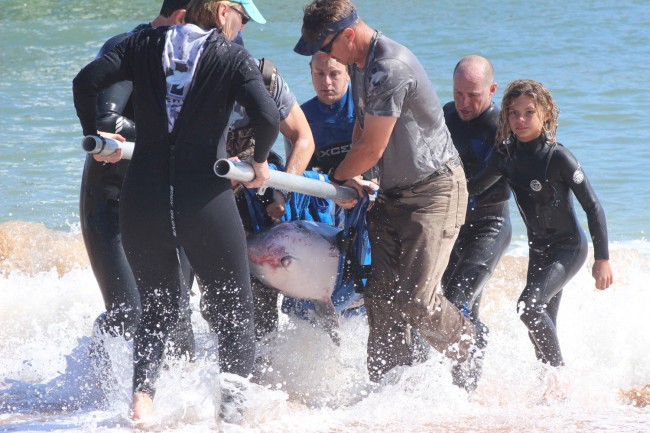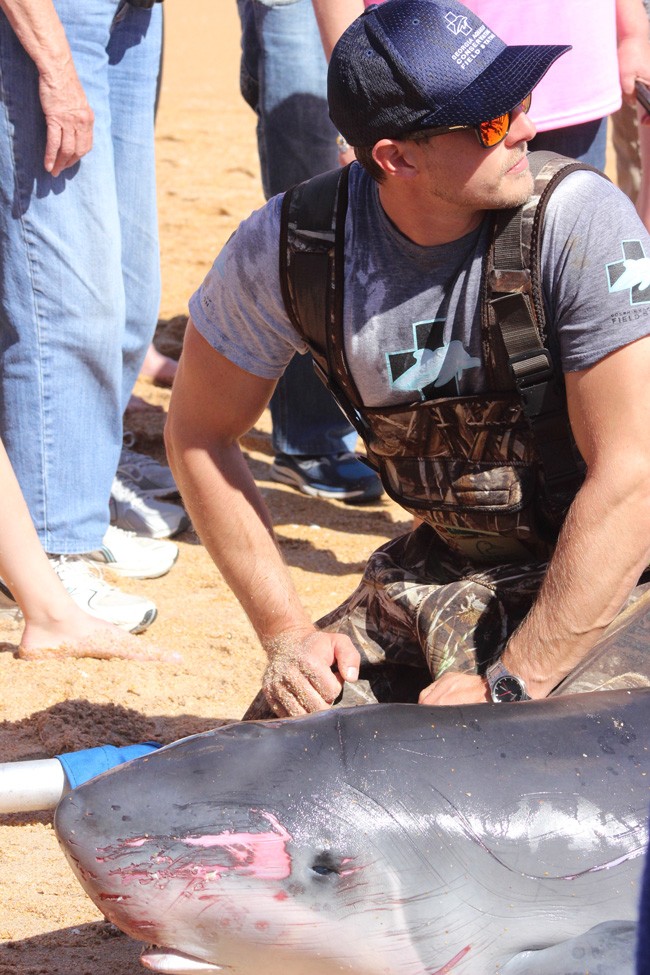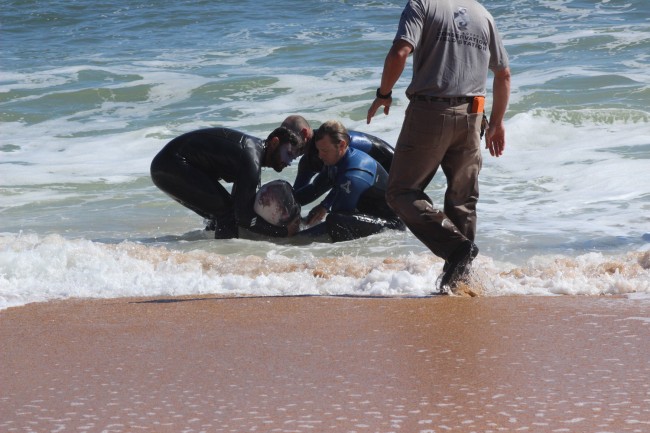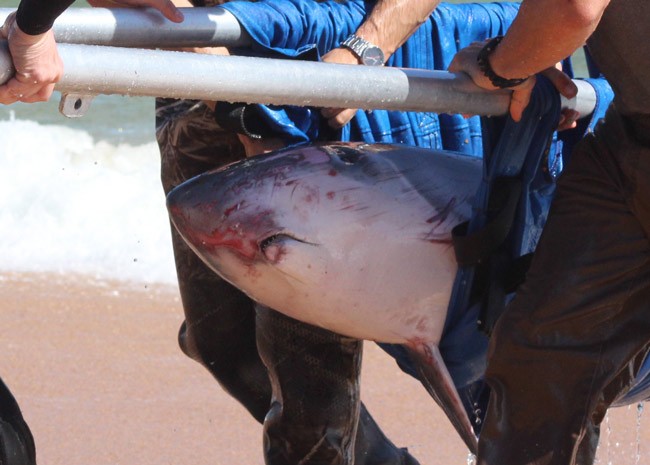
A beached Kogia sima whale, also known as a dwarf sperm whale, died near the Flagler Beach pier Monday morning after it had appeared in likely distress the previous day a few blocks north and had at times been helped away from the beach by swimmers and surfers.
Georgia Aquarium Conservation Field Station staff responded to the scene early Monday, around 6 a.m., after receiving calls about the whale being stranded. Once on site, field station staffers “determined the animal was in poor condition and unfortunately it did not survive,” Jessica Fontana, a spokesperson for the aquarium, said in a written statement.
“Our GACFS team is currently conducting a necropsy that will help determine the cause of death,” Fontana said. “Necropsy results can take weeks to receive. Animals strand themselves for various and sometimes unknown reasons and hopefully the necropsy will provide a little insight as to why this particular animal stranded.”
Sherry Blevins, a Flagler Beach resident who was at the scene when the whale was carried out of the water–and provided the images illustrating this story–said the whale had been looking mostly inert and had been merely circling in the water this morning. Some surfers tried to help, keeping the whale upright until aquarium staff arrived. But it was apparent that the whale was dying.
Field station staff took the whale away to conduct the necropsy at their lab.
Dwarf sperm whales can grow to lengths of 9 feet and weigh up to 600 pounds. “Dwarf sperm whales are rarely active or aerial at the surface, and it is very uncommon for them to approach boats,” NOAA’s briefing on the animal notes. “Usually they are seen slowly swimming (3 knots) or “logging” (floating motionless) at the surface, showing only a small portion of their body. Before diving, they will slowly roll or sink and disappear from view without displaying their flukes. This species is very difficult to visually spot at sea given their timid behavior, lack of a visible blow, and low profile/appearance in the water. They are usually only detected in ideal (i.e., calm) sea state and weather conditions.”
NOAA estimates there are only about 300 to 400 such animals in the western North Atlantic, and 600 to 750 in the northern Gulf of Mexico. The stock is much larger, between 11,000 and 19,000, in a zone extending 200 miles from the Hawaiian island shores. The species is protected under the Marine Mammal Protection Act and is considered threatened, but not endangered.
Georgia Aquarium Conservation Field Station is an active member of the Marine Mammal Stranding Network coordinated by NOAA Fisheries and is currently authorized to respond to marine mammal stranding’s in Flagler. As a member of the South East Region, GACFS also plays a supporting role in stranding and rescue events with neighboring network participants. The GACFS also conducts field studies that help experts better understand the health of oceans worldwide and the animals that live in them.
Should beach-goers come across a stranded animal, they should call the Florida Marine Mammal Stranding Hotline at 888/404.3922, a Florida Fish and Wildlife Conservation number. In this case, FWC officials said, the incident was handled by the field station since those biologists arrived at the scene early and were able to handle the case.
In 2012, a 26-foot right whale died near Varn Park, a few miles north of the pier, or had died at sea and was beached. A year earlier, two pilot whales, beached in Marineland, died.
![]()
































confidential says
Not longer suffering…but wonder what caused her death.
Anonymous says
:(